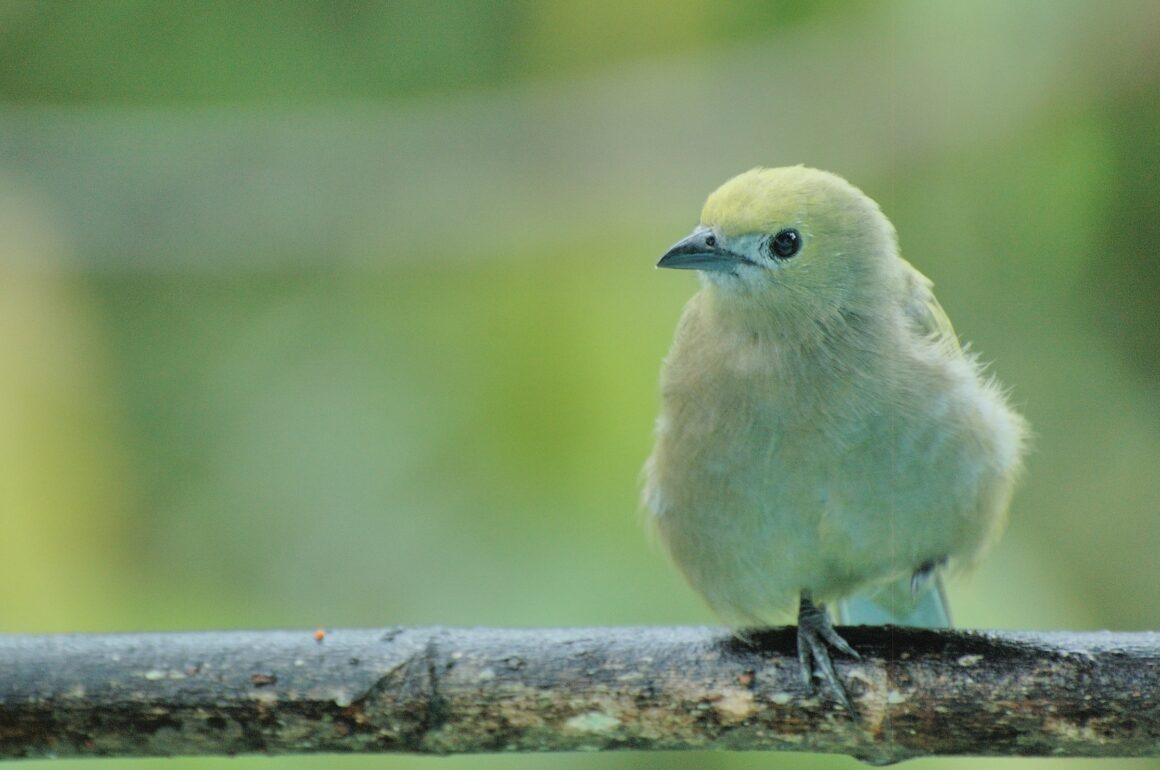
My recent posts may have given the impression that business birding is always exotic, on remote islands or with lots of birds. Seeing Solitary Tinamou before breakfast.
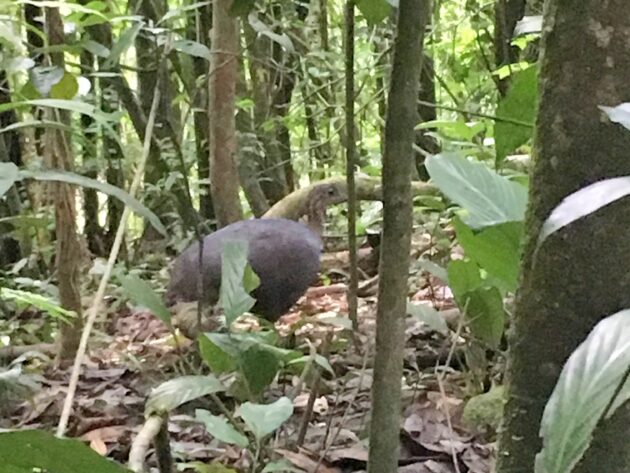
Frankly, most of the time it’s just a few hours in some park near some boring hotel in some medium to large city. However, any hour spent birding is an hour spent well! I took a lot of inspiration from David Lindo’s book The Urban Birder – which taught me to be receptive to the possibilities of the urban environment, wander and wonder. So, how does one combine birding with business? Here are some tips for the novice business birder.
Preparation is key. First port of call: eBird. If you have to look for a last-minute option eBird has an “Explore” function on the mobile app that shows you the nearby hotspots. But nothing beats a thorough preparation at home. For example, I had to be in Nashville (Tennessee) for a conference. The hotel had been arranged so little choice there (see below in case you do have a choice) but a quick look showed a sizable park nearby: Shelby Bottoms (snigger). This park is easily reachable from downtown in under 30 minutes by taxi or ride share. I got myself 4 lifers (Least Flycatcher, Eastern Bluebird, Field Sparrow, and Indigo Bunting) before a downpour ended the excursion. The Eastern Bluebird was actually a target bird for the trip, highly unusual to be able to have a specific goal for a business trip (all decent photos in this post are from the 10000Birds archive – thank you).
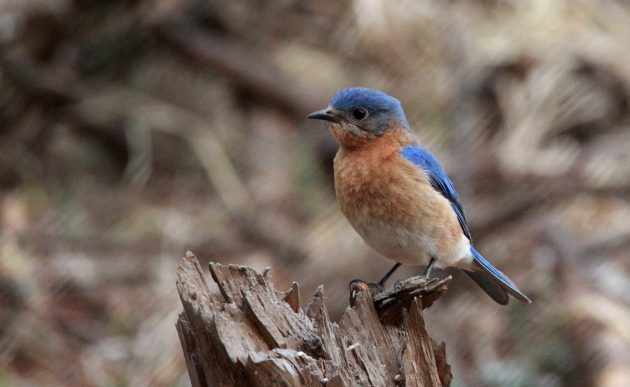
Come to think of it, quite audacious to set myself a non-line dancing target for Nashville. Most of the time it’s sheer luck or coincidence that determines what you will see – I saw my first Black Redstart outside a meeting room in France, for example.
You can favour fortune, be bold and pick your hotel wisely. Business hotels are thirteen in a dozen. For the birder it is therefore more important to value birding options over the contents of the mini bar. First, you check on-line for sizable green areas near your hotel options. A good choice of hotel can make for interesting breakfast companions.
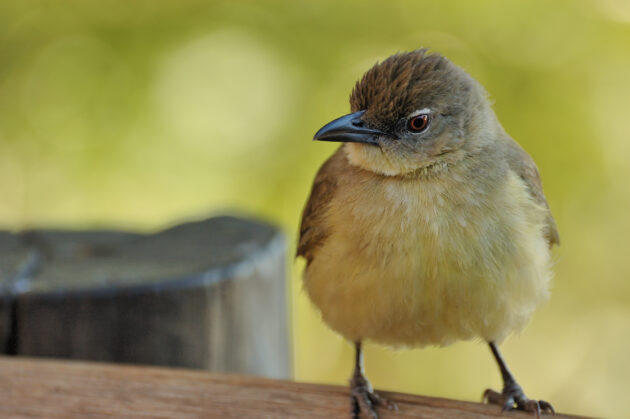
Your alternative is to check for hotels well outside the city, in or near a green area for in some cities the traffic can be predominantly going in one way and not the other. You will travel against the flow to your work location and while the distance may be longer, travel time can be much shorter. This is advanced location searching that requires more than average local knowledge. It can be worth it though.
And don’t forget to just check 10000Birds. Birding on a refinery or birding in a mega-city. It’s all here on this website.
Pack the essentials. Any business traveler just needs a passport and a credit card – everything else is extra. The birding business traveller will ALSO need binoculars and a good guidebook for the region. My preferred travelling binoculars are Nikon Monarch 7, 8×30. They are light, small, and good value for money. For longer trips or holidays I bring my other pair, but for business travel the weight becomes bothersome and the price tag may attract unwanted attention. I also pack socks and pants treated with Permethrin which keep ticks effectively at bay. Some DEET insect repellent for the exposed body parts (ooh la la), a hat and sunscreen complete the birding essentials.
Don’t rush home. If you just go for business and stay in the city than you will be very likely returning home with a limited list – mainly featuring Feral Pigeon (shown in its natural habitat in the award-winning picture below).
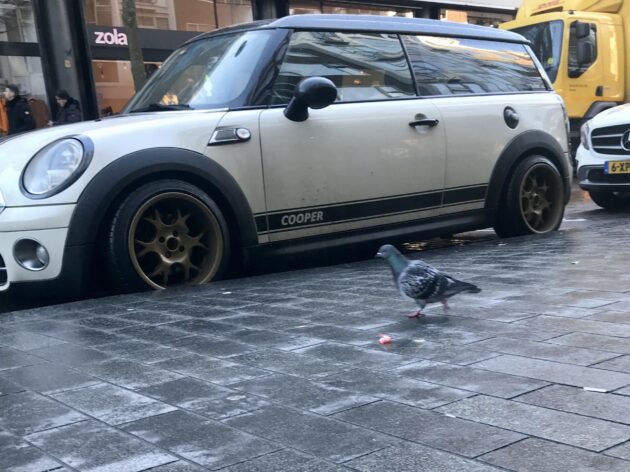
If you are fortunate like me in the business of sewage, grime, litter and dirt, your travel will inevitably lead you to a wastewater treatment plant with swallows and other birds all around you. How difficult can it be? Just bring your binoculars then. However, you will be surprised to learn that most clients and business partners do not appreciate you ignoring them for birds. Thus, during work you will not see a lot of birds. Period. You need a work-around. Saying you bring binoculars to watch the installation from the shade is not an option. I tried. However, many places have multiple flight options. If you pick the afternoon flight, you will have a whole morning for birding. Case in point, this has been my modus operandus in Nairobi. My preference is the night flight to Nairobi in, and the night flight out. My Kenya list of 69 species consists entirely of birds I saw during business trips to Nairobi. On that list are absolute beauties like White-eyed Slaty-Flycatcher, Hartlaub’s Turaco, Cinnamon-chested Bee-eater, Jackson’s Widowbird and the aptly named Beautiful Sunbird. While most cities lack the magnificent National Park that Kenya’s capital city boasts it is often possible to bird in a large park and still catch your flight, like I did recently in Denver.
Most importantly, enjoy the moment. While in Mendoza (Argentina) for an audit I stayed in a hotel near the Plaza Sarmiento Park. This is a tiny speck of green but I saw about 20 species there, and two lifers – Chimango Caracara and Spot-winged Pigeon. I visited before breakfast and returned late in the afternoon after work. Most of the time I just watched the Rufous Horneros building their clay nest, displaying, and singing. One or two convenient park benches had been provided by the good people of Mendoza’s public works. Some of the older nests had been taken over by other species so there was a lot of activity. In Brazil they call this bird João-de-Barro and the Band-tailed Hornero is called Maria-de-Barro. João and Maria are very common names in Portuguese (and barro appropriately means potter’s clay). Common birds with common names but with very interesting behaviour – worth just spending time observing, learning, and enjoying. It’s not always about the next lifer on the list. Wander and wonder…
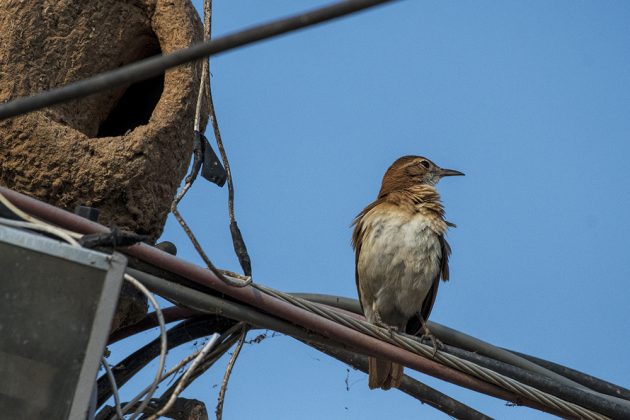













A great topic, Peter! In my case it is ministry birding, not business birding, but it works the same way. I just bought the tickets to Villahermosa, Mexico, in March. So I’m looking forward to more of those sweet, sweet tropical birds there.